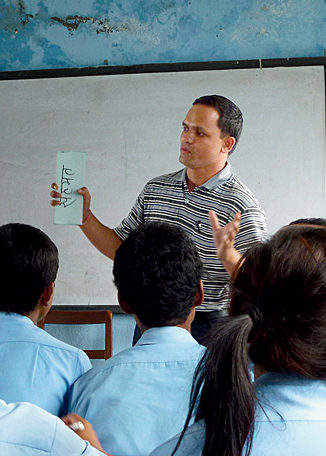
The children of low-income families in the developing world have many obstacles when it comes to participating in the financial world: Their parents have not done it; they cannot meet age and proof-of-identity requirements; bank branches are far from home. The result is that they enter adulthood excluded from the financial world, unable to deposit a paycheck, invest earnings, or take out a loan.
But a program developed by the Center for Social Development (CSD) in the Brown School — with support from the MasterCard Foundation and working with Save the Children, the New America Foundation and the Consultative Group to Assist the Poor — aims to give these kids a different future.
Directed by Li Zou, MSW ’03, MBA ’08, international director for the Center for Social Development, YouthSave takes a learning-by-doing approach, focusing on youth savings accounts. Low-income children often have money – small sums saved from odd jobs or received as birthday presents — but lack the knowledge or the options to do anything with it. Partnering with local banks and schools in Colombia, Ghana, Kenya and Nepal, YouthSave has created tailored, sustainable savings products meant to entice students to set up accounts and deposit their money.
Ultimately, YouthSave’s goals are to increase youth savings and promote the related psychological and social effects of the accumulation and ownership of assets.
Comments and respectful dialogue are encouraged, but content will be moderated. Please, no personal attacks, obscenity or profanity, selling of commercial products, or endorsements of political candidates or positions. We reserve the right to remove any inappropriate comments. We also cannot address individual medical concerns or provide medical advice in this forum.